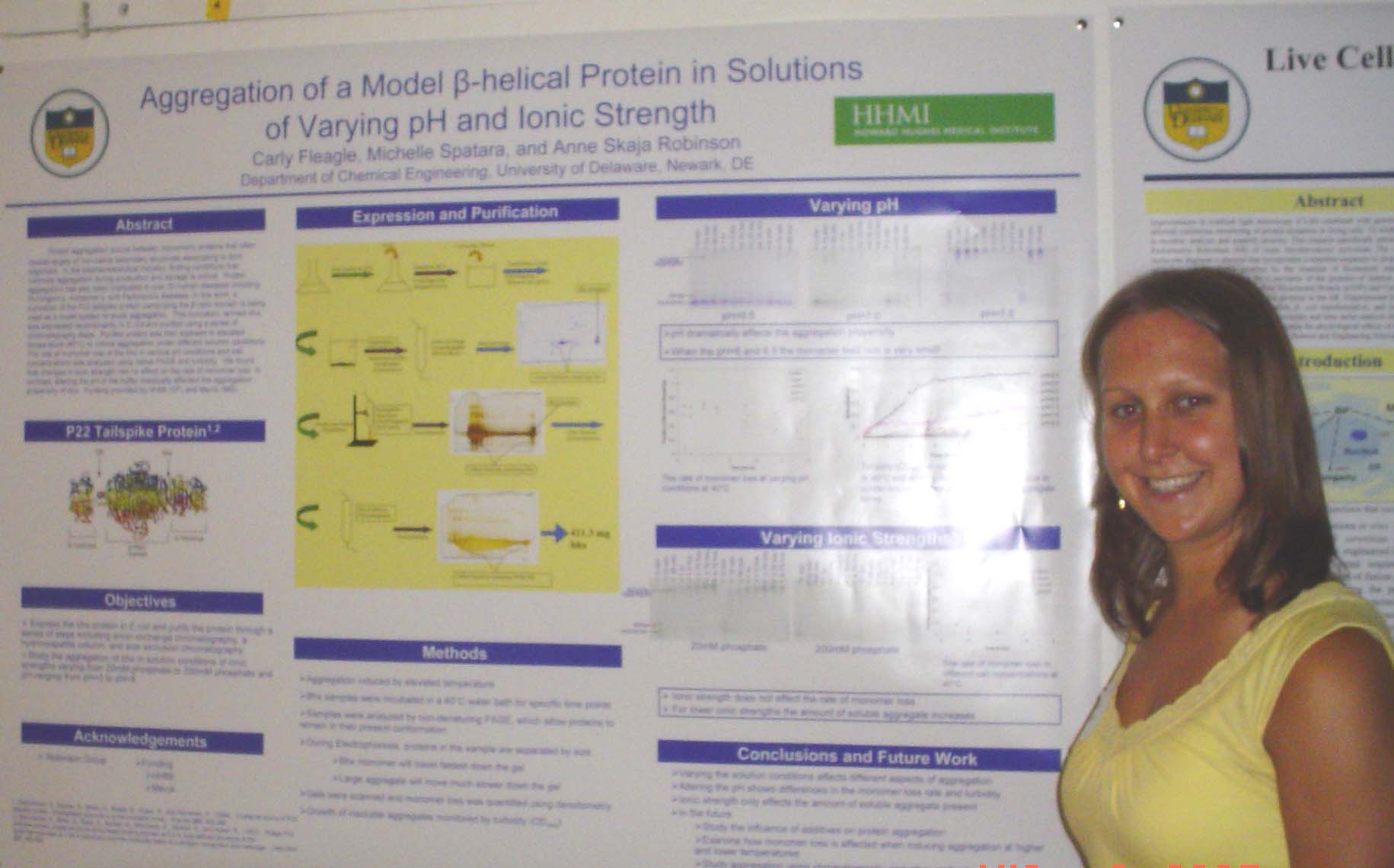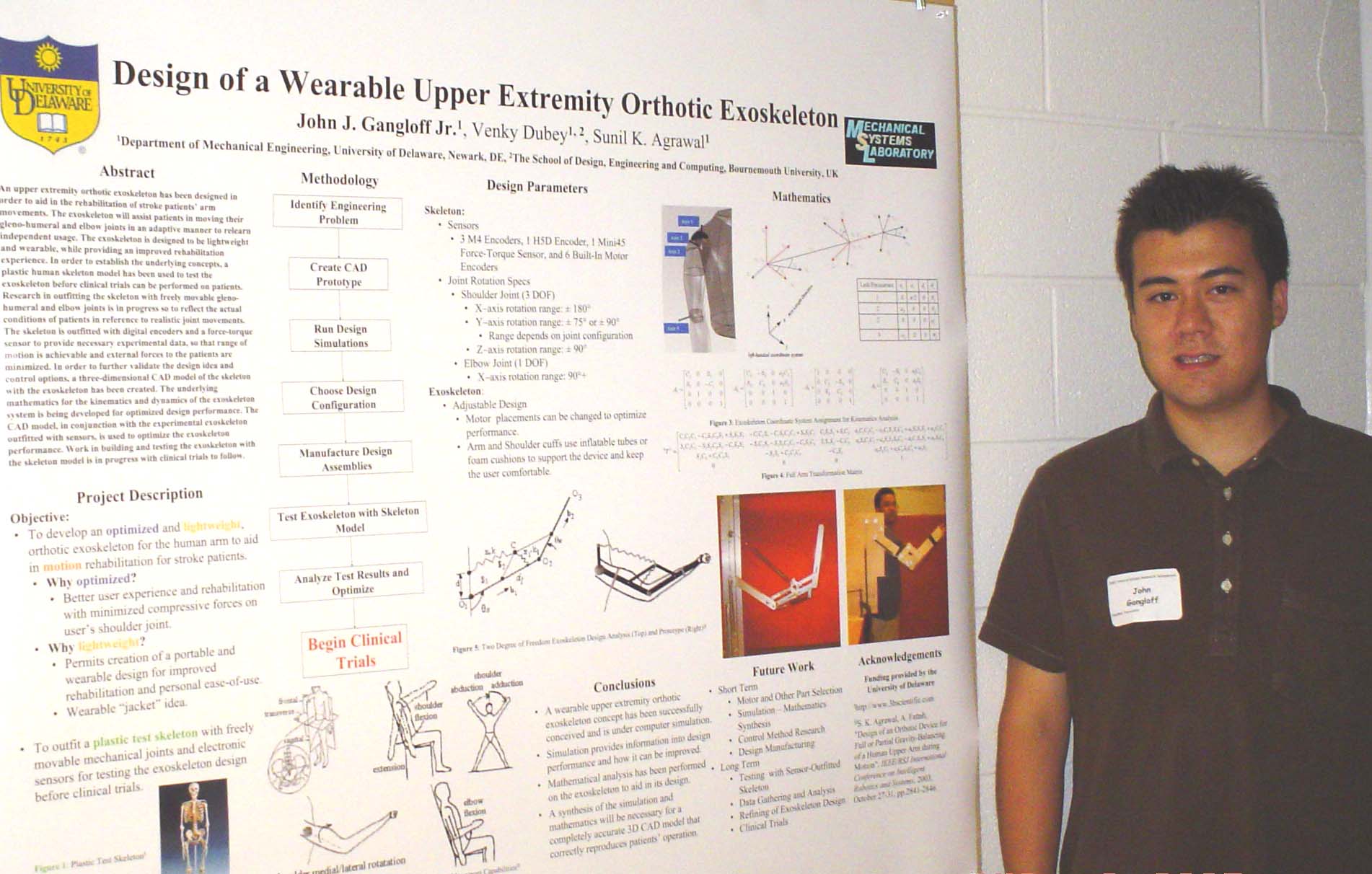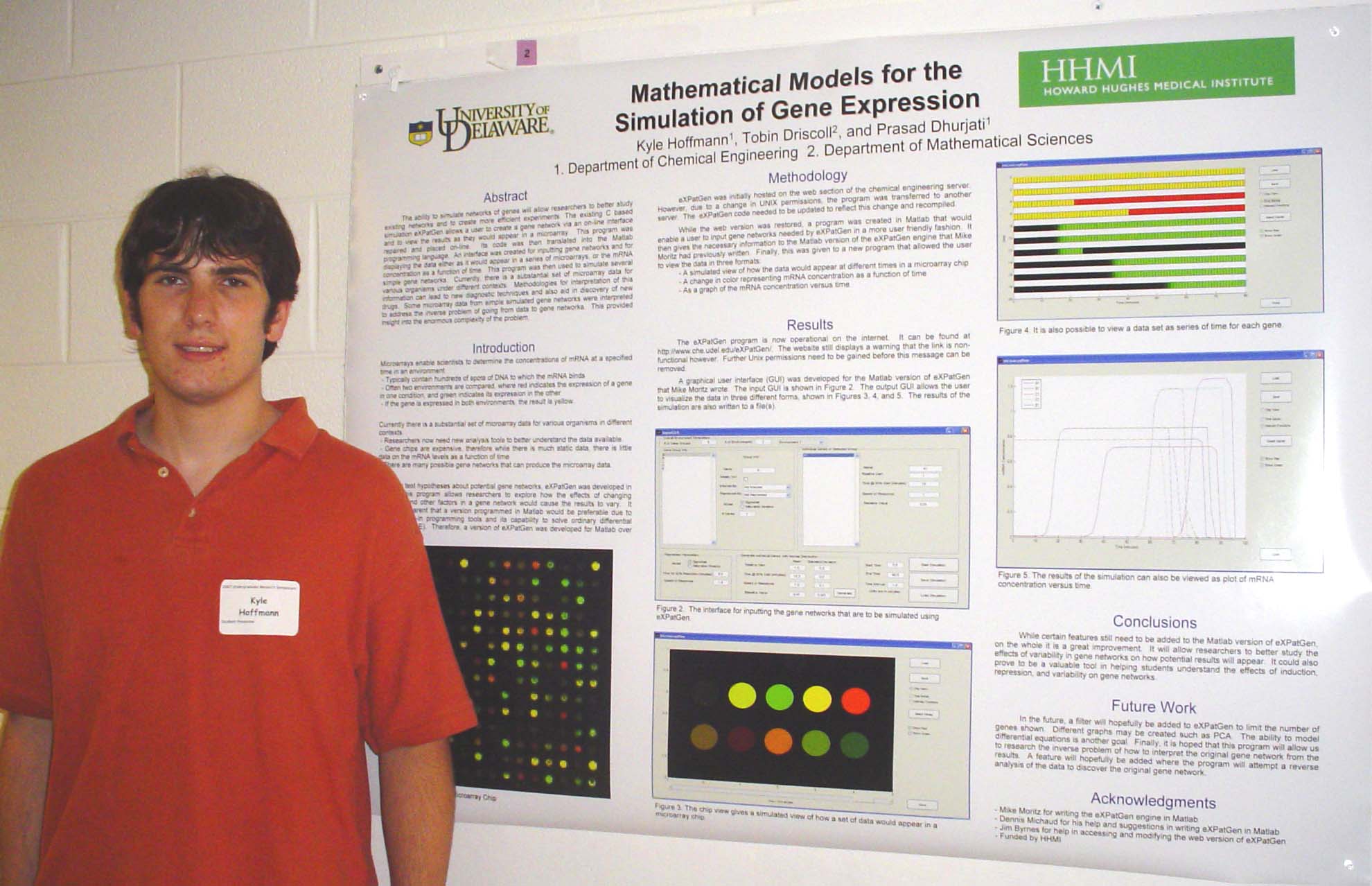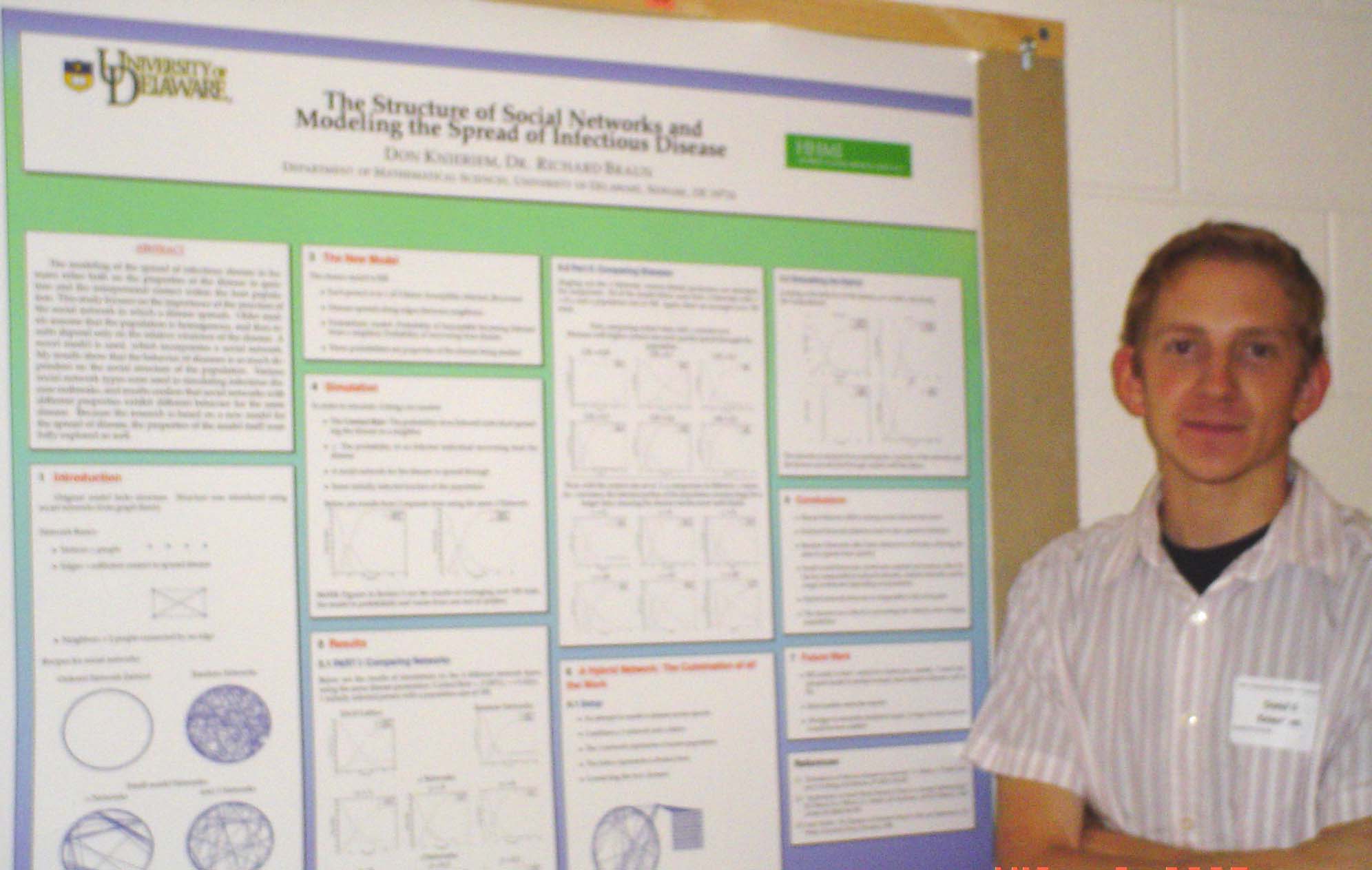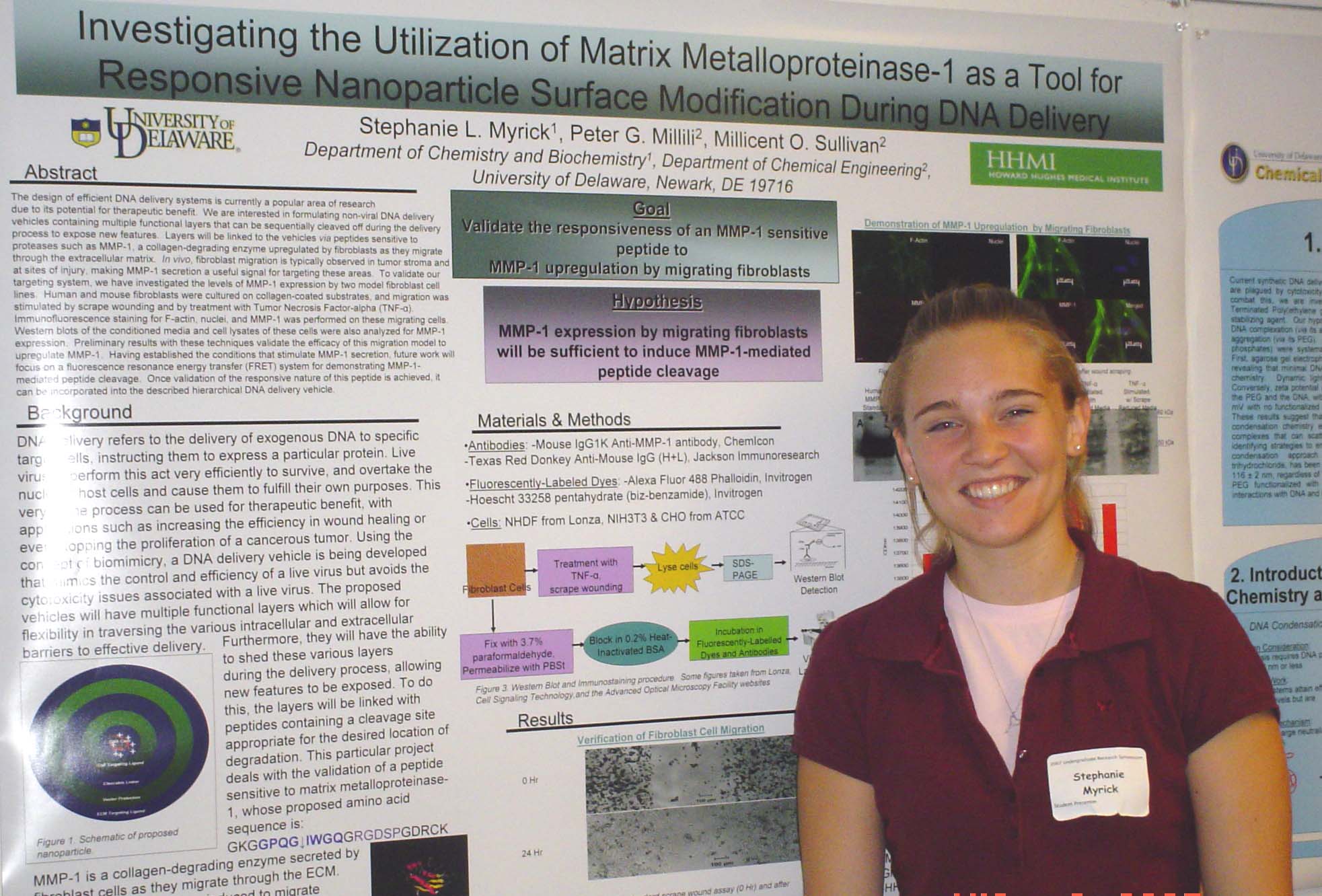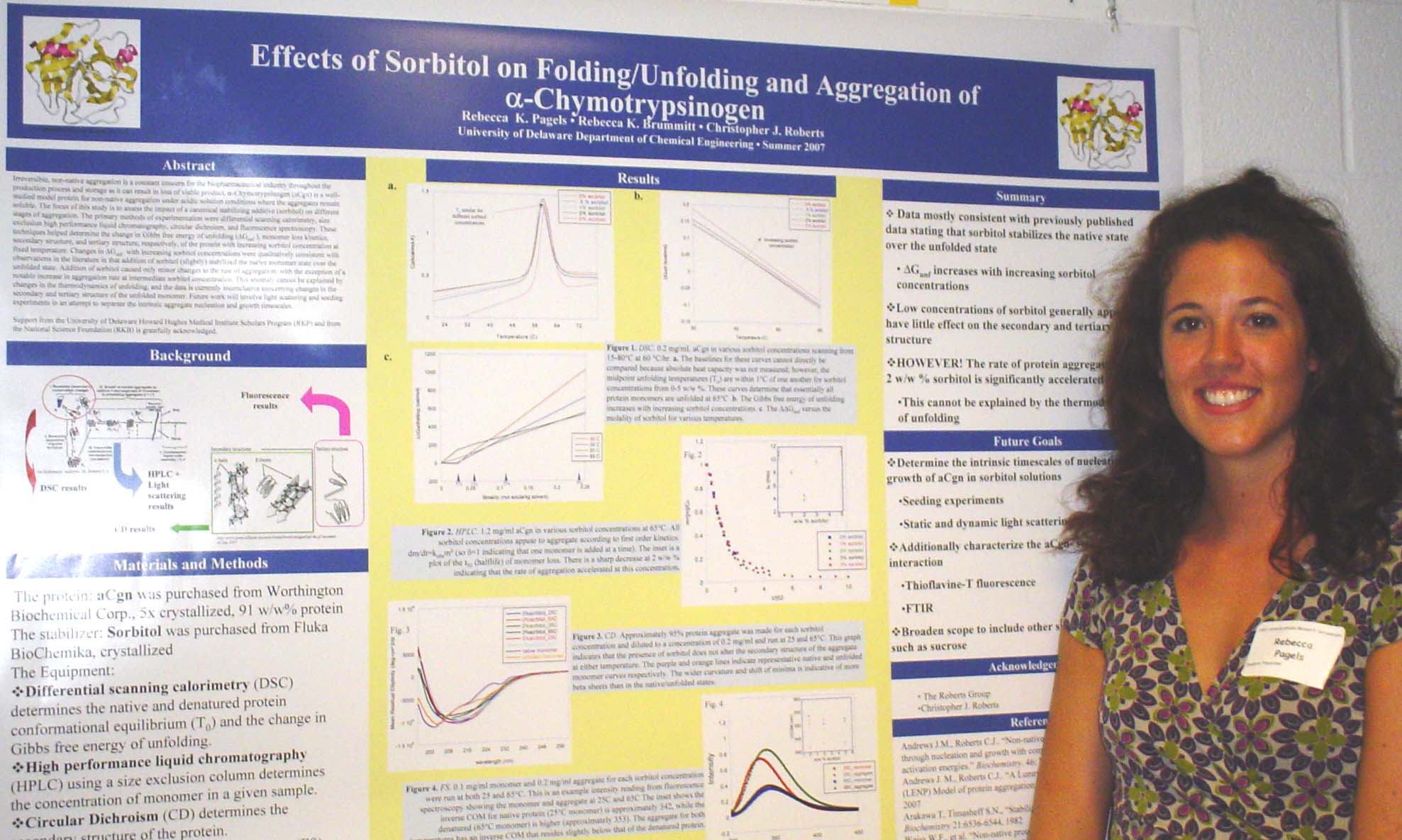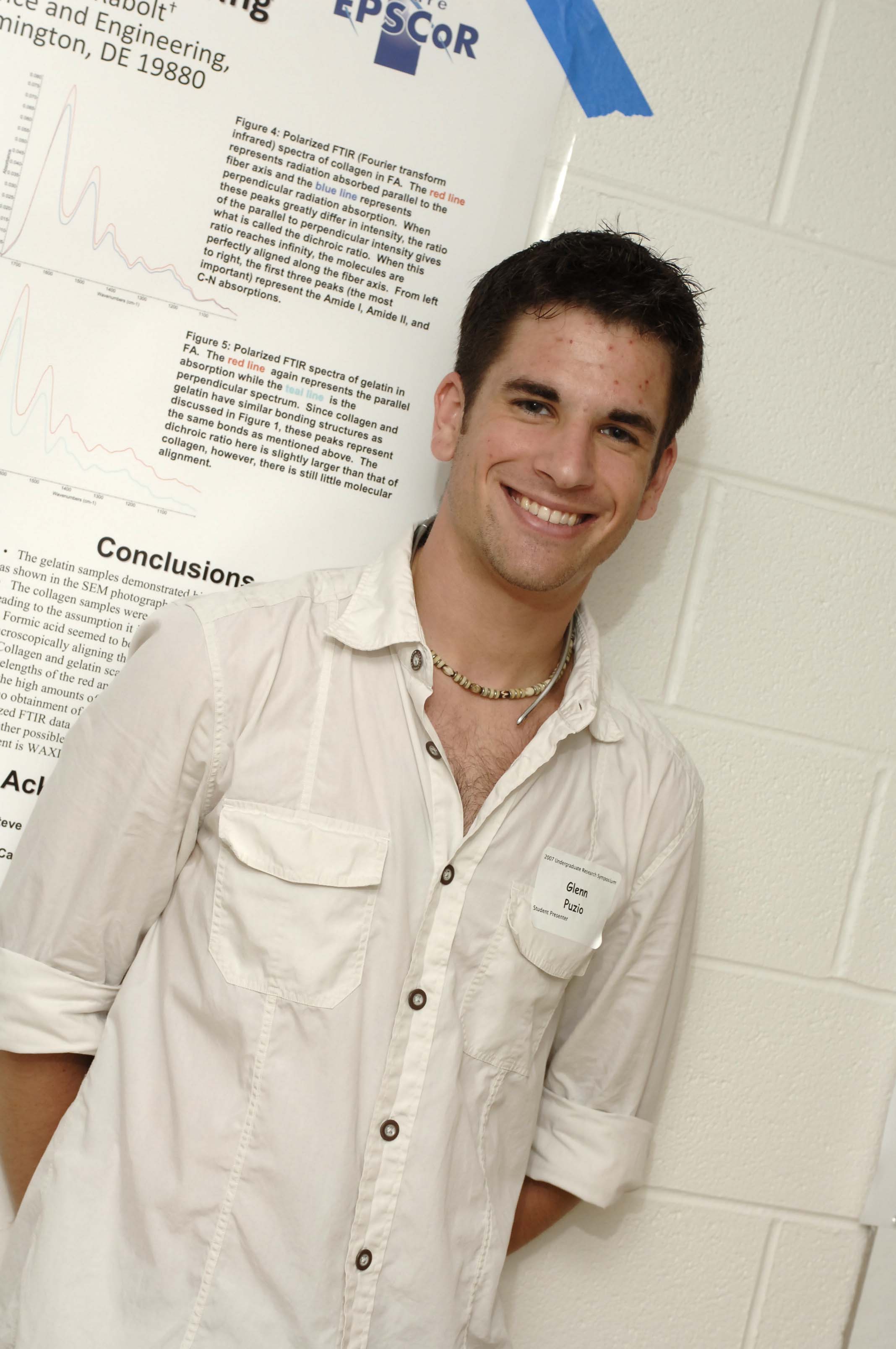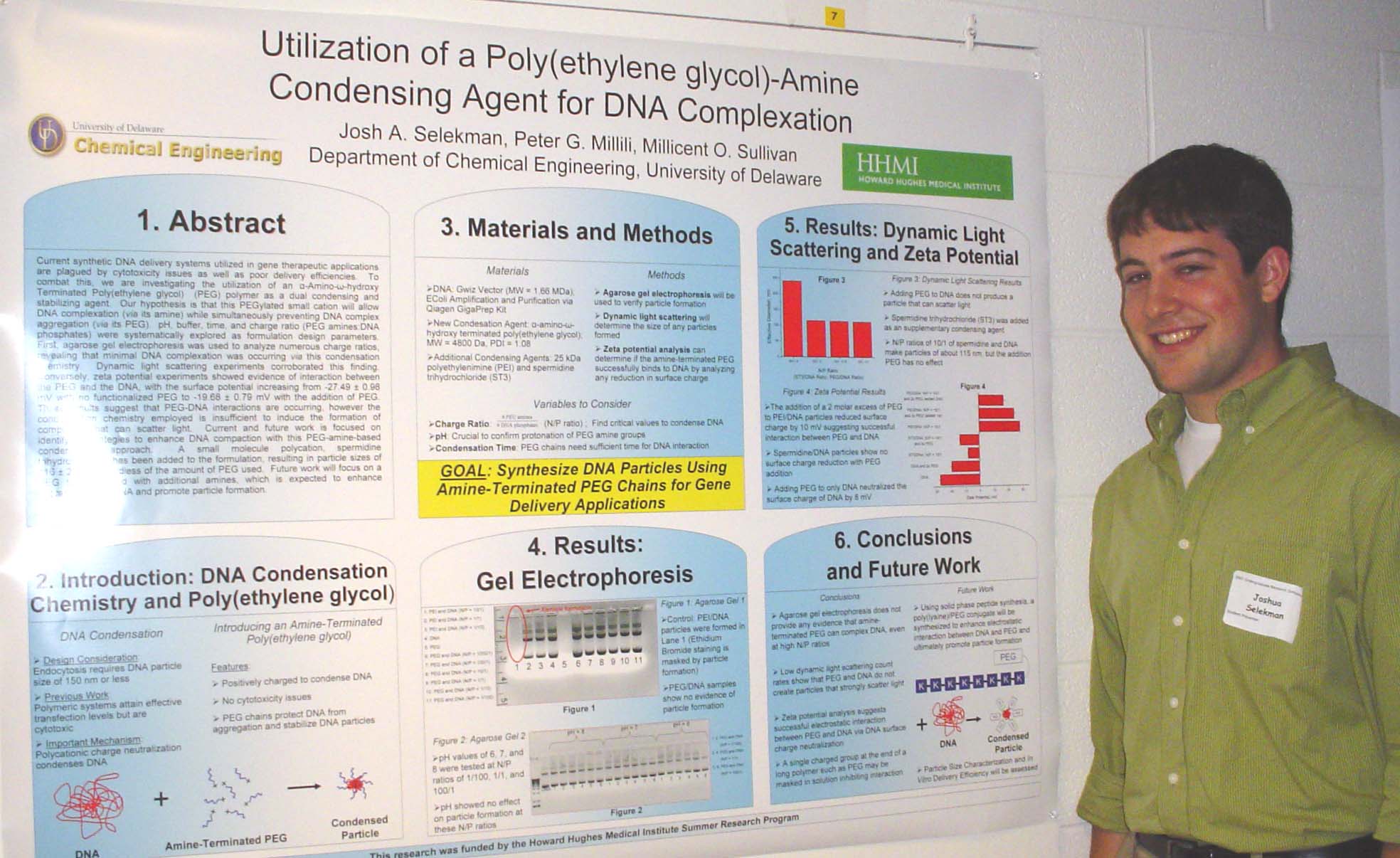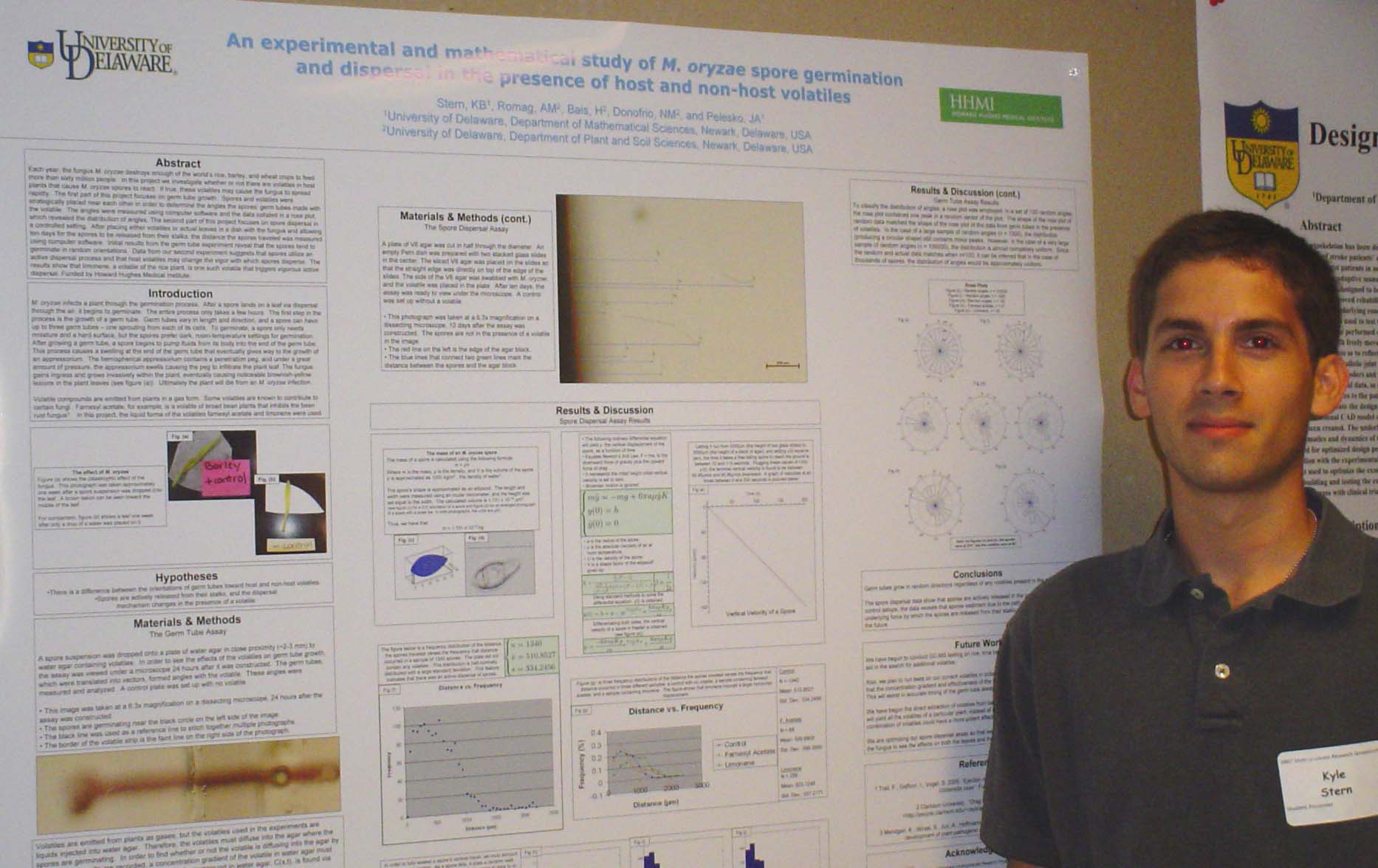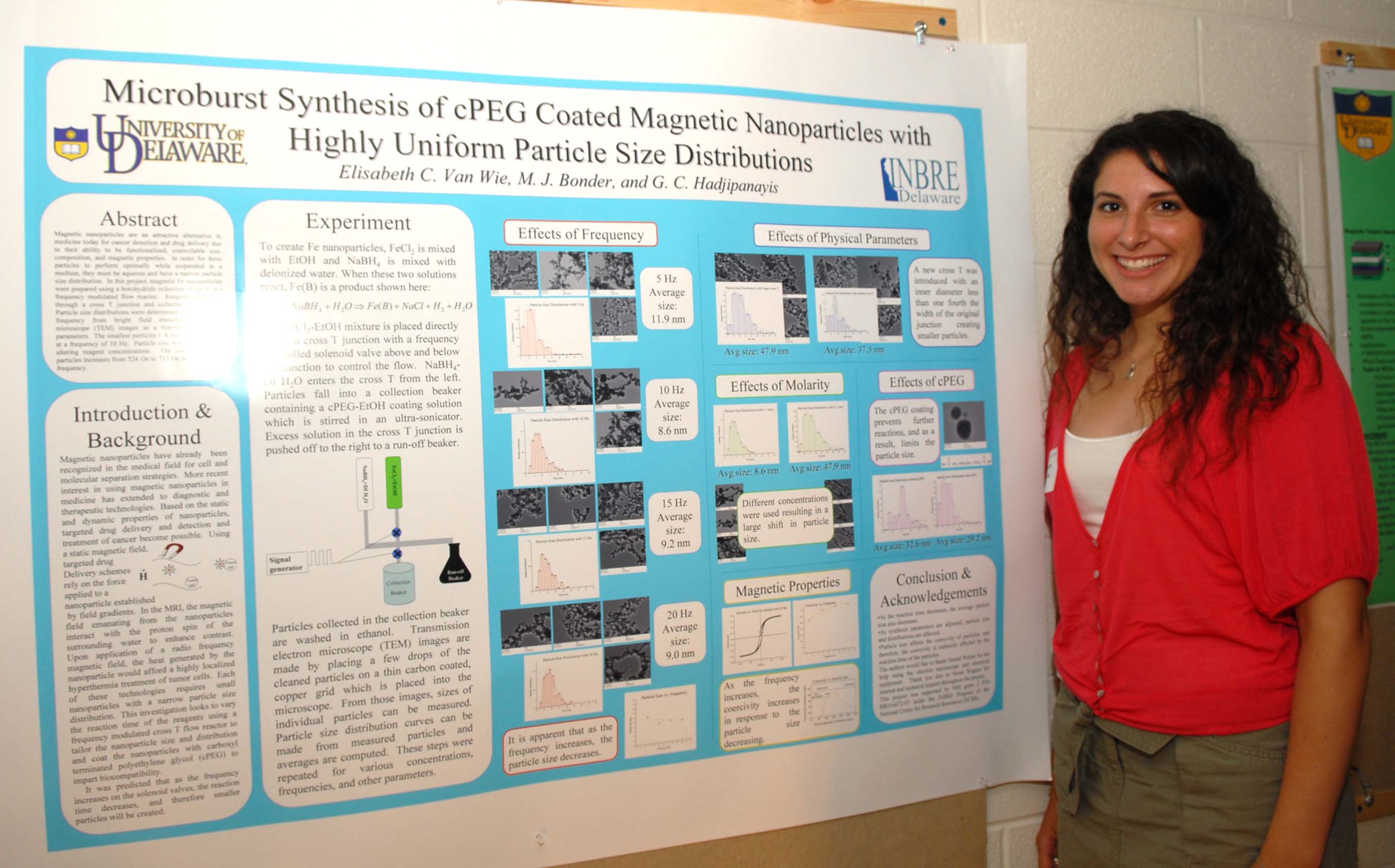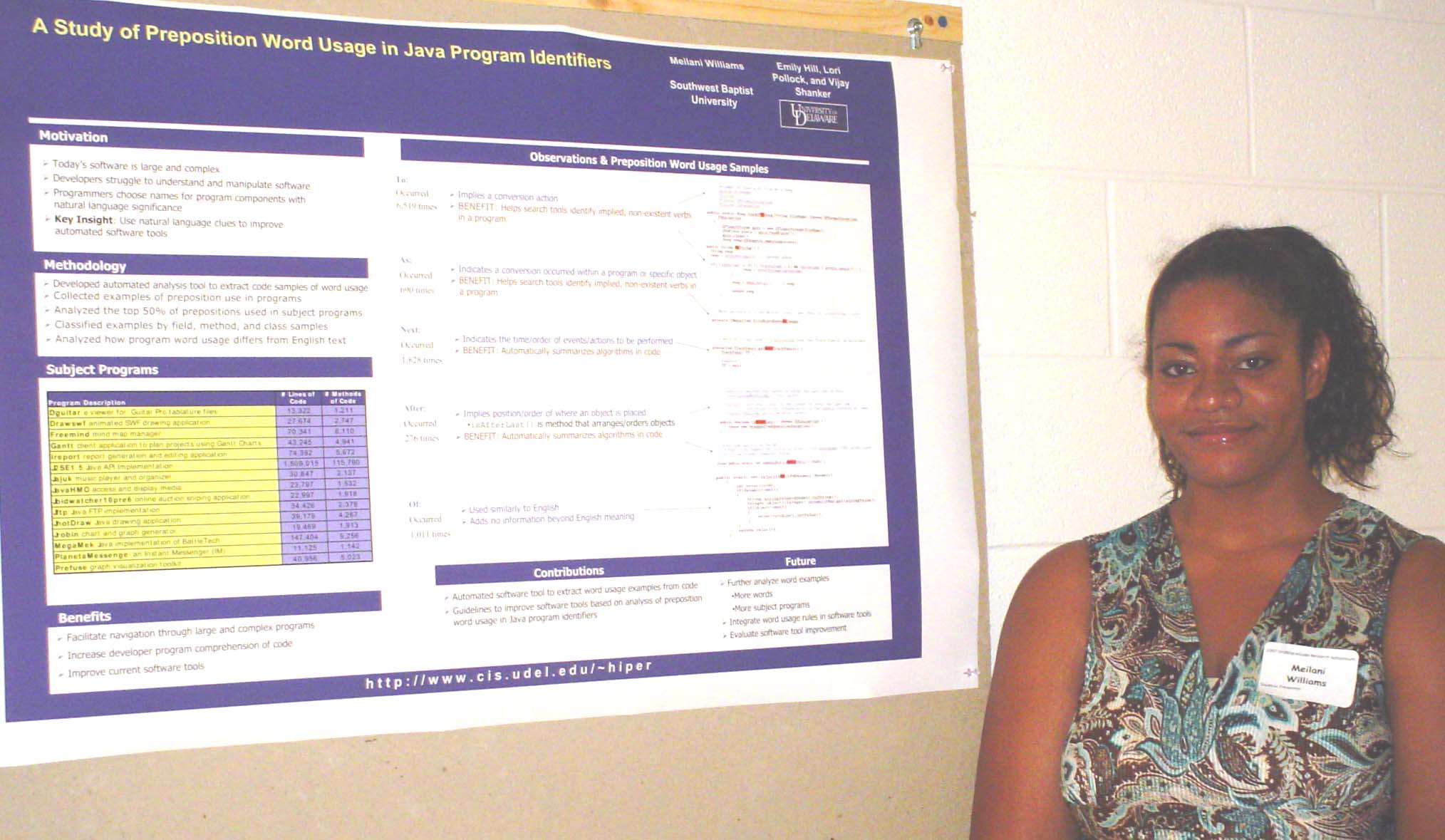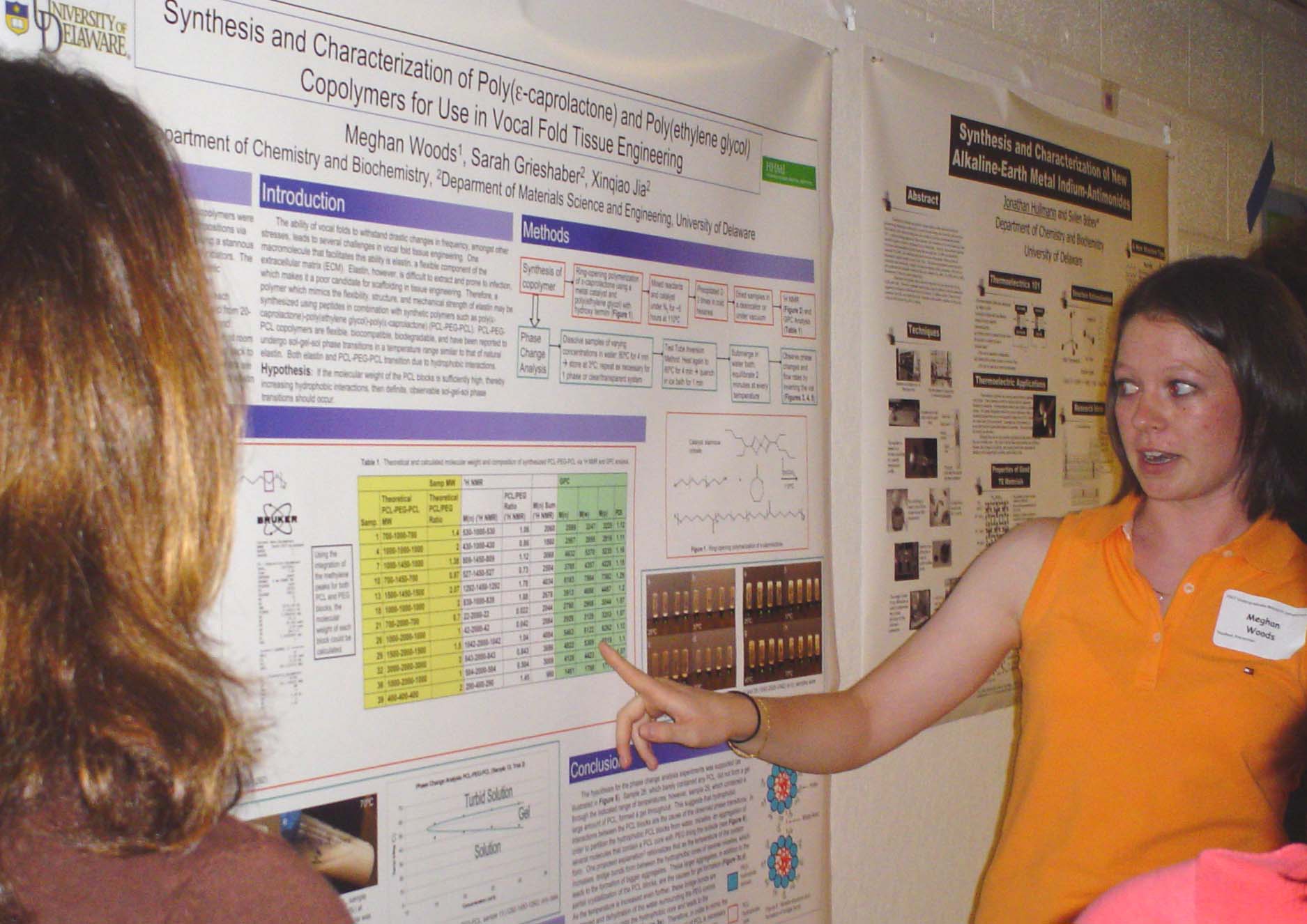|
Noise
Challenges for Achieving Pico-Tesla Sensitivity in Tunneling
Magnetoresistive Sensors
Mohamed Bah and Edmund Nowak Department of Physics and Astronomy Magnetic
tunnel junctions (MTJs) are thin film solid structures with
magneto-electronic
properties that are favorable for advancing low-power, very high
resolution
magnetic field sensors. Room temperature
tunneling magnetoresistance (TMR) of nearly 400% is one of the main
characteristics that make MTJs capable of achieving Pico-Tesla
resolution. To optimize signal-to-noise
ratio, high
response must be coupled with low intrinsic sensor noise.
We report low frequency noise measurements in
MTJ devices configured in a Wheatstone bridge where two legs of the
bridge are
shielded from small magnetic fields. The
resulting bridge imbalance voltage is linear for fields ranging from -4
to +4
G. Mechanisms that contribute to
intrinsic sensor noise include: thermal or Johnson noise, shot noise
due to the
discreteness of the electron charge, thermal magnetic noise, and
resistance
fluctuations. The latter typically exhibit
a 1/f power spectrum, where f is
frequency, but occasionally
discrete switching between resistance states (telegraph noise) is also
observed. Measurements as a function of
field reveal that the 1/f noise has
both electronic and magnetic origins that will limit the ultimate
resolution of
sensors below 1 kHz. The electronic
component does not depend on field and is associated with charge traps
in the
tunnel barrier. The magnetic component
can be large and sometimes is found to scale with the slope of the
resistive
response. The origin of this noise is
discussed. A noise equation is presented
that takes into account the various noise sources and can be used to
examine
the tradeoffs in designing sensors to achieve Pico-Tesla sensitivity.
|
|
Characterization of Supported PtNi and PtCo Bimetallic Catalysts using FT-IR Gas-Phase Reactions Studies and CO Chemisorption Jeff Bosco and Jingguang Chen Center for Catalytic Science and Technology (CCST), Department of Chemical Engineering Through extensive DFT
modeling and single-crystal surface
studies under ultra-high vacuum conditions, the Chen research group has
demonstrated
that platinum-nickel (PtNi) and platinum-cobalt (PtCo) bimetallic
surfaces show
enhanced activity over single metal surfaces (Pt, Ni, Co) towards the
hydrogenation of both carbon-carbon and carbon-oxygen double bonds. The purpose of our current research is to
employ
Fourier-transform Infrared (FT-IR) spectroscopy as a method of
characterizing
PtNi and PtCo bimetallic nanoparticles supported on γ-alumina. Methods of characterization include catalytic
gas-phase reaction studies of the hydrogenation of cyclic-alkenes,
aromatics,
and simple un-saturated aldehydes as well as surface CO chemisorption
studies. Areas of catalyst
characterization include the
verification of the presents of truly bimetallic particles, overall
hydrogenation activity evaluated by kinetic rate parameter fitting, and
the
effect of impregnation sequencing during bimetallic catalyst
preparation. Funding
provided by the Department of Energy. |
|
Creating Patterned Surfaces Using Particle Spreading at Air/Water and Oil/Water Interfaces Michael Boyle and Eric Furst Department of Chemical Engineering Repulsive forces of colloidal particles at the 2D interface allows for them to self assemble into patterns along the boundary between two distinct phases. These patterns are basically a hexagonal close packed system of the colloidal particles along the oil-water interface. These patterned arrays can be imaged using scanning electron microscopy or simply a camera attached to an upright microscope. Once the pattern of the colloidal particles is generated, the subphase, which is water, has to be gelled to fix the colloidal particles in place. Next, with the subphase gelled, an epoxy resin is substituted in for the oil or air, and the surface of the epoxy resin has the colloidal particle pattern when it is extracted. These colloidal particles can then be heated and subject to a magnetic field. This magnetic field will orient the colloidal particles so that each of them has a magnetic dipole moment. Once the particles are magnetized, they can be used in microfluidic channels to separate other magnetic particles in a fluid flow. |
 Soluble Aggregates in Nonnative Aggregation of aCgn and a-La Deepthi Cherian, William Weiss, Christopher Roberts Department of Chemical Engineering Heat induced aggregation
of two proteins, α-chymotrypsinogen
(aCgn) and α-lactalbumin (a-LA), was conducted to in an attempt to
create
soluble aggregates using variations in pH and salt content, for
subsequent
biophysical characterization to determine their structure and
morphology.
Resulting precipitates were also treated with acid in attempt to
recover
soluble aggregates. The concentration of these aggregates were
determined by
High Performance Liquid Chromatography. While aCgn has been previously
shown to
create soluble aggregates when heated at a pH of 3.5, soluble
aggregates were
also recovered by the addition of acid to the protein after
precipitation. Similarly, soluble
aggregates were present in
the re-acidified solutions of a-LA. However, the concentration of these
aggregates with respect to monomer is presently too small to allow for
further
characterization under different assays. Supported by the HHMI
Undergraduate
Science Education Program. |


